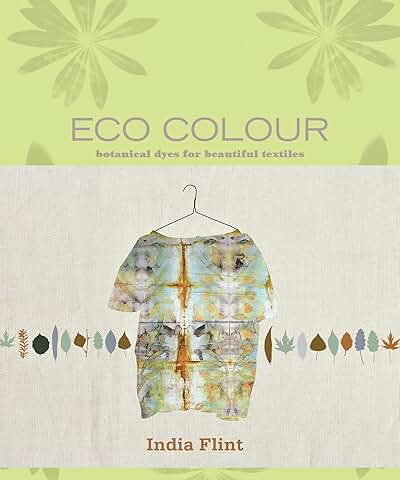Eco Colour: Botanical Dyes for Beautiful Textiles
In an age where sustainability is more than just a trend, botanical dyes are making a comeback as a vibrant and eco-friendly alternative to synthetic colors. Eco Colour: Botanical Dyes for Beautiful Textiles by India Flint is a must-have guide for anyone interested in natural dyeing techniques. This book doesn’t just teach you how to create stunning hues from plants—it also fosters a deeper appreciation for sustainable textile artistry. Whether you’re a beginner or a seasoned dyer, this book offers invaluable insights into transforming everyday materials into beautifully dyed fabrics.
Why Choose Botanical Dyes?
Botanical dyes are not only environmentally friendly but also produce uniquely rich, earthy tones that synthetic dyes struggle to replicate. Using plants like turmeric, avocado pits, madder root, and indigo, you can achieve a wide spectrum of colors while minimizing harmful chemical waste. What sets Eco Colour apart is its focus on low-impact dyeing methods, making it an ethical choice for conscious crafters. The book also emphasizes foraging and working with locally sourced materials, reinforcing sustainability from start to finish.
For those curious about historical dyeing techniques, our article on Vintage Tattoo Flash: 100 Years of Traditional Tattoos from the Collection of Jonathan Shaw explores how natural pigments were used in early tattoo art, drawing parallels to modern botanical dyeing.
What Makes This Book a Must-Have?
Eco Colour is more than just a manual—it’s an inspirational resource packed with step-by-step tutorials, stunning photography, and insightful commentary on sustainability. Here’s why you should consider adding it to your collection:
- Comprehensive Techniques: From bundle dyeing to ecoprinting, the book covers a wide range of methods suitable for all skill levels.
- Environmental Consciousness: Flint’s approach encourages minimal waste, making it ideal for eco-conscious readers.
- Creative Freedom: Unlike rigid synthetic dye processes, botanical dyeing allows for experimentation, resulting in one-of-a-kind textures and patterns.
If you’re ready to dive into the world of natural dyes, you can find Eco Colour on Amazon—it’s a worthwhile investment for textile artists and sustainability advocates alike.
Where to Source Natural Dye Materials
One of the key takeaways from Eco Colour is the accessibility of dye materials. Many ingredients can be foraged from nature or even found in your kitchen. Websites like Botanical Colors offer high-quality, ethically sourced dye supplies, while Maiwa provides workshops and tools to refine your technique. By using locally available resources, you reduce your ecological footprint while indulging in a centuries-old craft.
Tips for Buying and Using Eco Colour
Before purchasing, consider how you plan to use the book. If you’re a visual learner, you’ll appreciate its lush photography and clear instructions. Beginners should start with simpler projects like dyeing cotton scarves before moving on to more complex fabrics like silk or wool. For the best results, pair the book with high-quality mordants, which help fix the dyes to fabrics.
Ready to transform your textiles sustainably? Grab your copy of Eco Colour today and start your journey into the colorful world of botanical dyeing!
